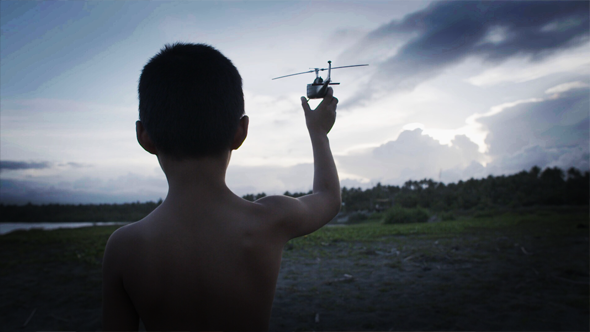On the murky brown river that runs from Pagsanjan Falls in the Philippines there is a particular bend. Every few minutes, boatloads of tourists paddle noisily by in plastic canoes, but no one takes any notice of this spot, and it’s not hard to see why. There is nothing here but a small tourist office, a few grimy resort villas and a stray yellow dog stretching in the sun.
You’d be excused for thinking the most exciting thing ever to happen here would be the rancor of disappointed package tourists demanding their money back. But you’d be wrong. Rewind about 30 years and this unremarkable river bend was the center of the cinematic world, engulfed in the explosive, sky-scorching finale of one of the most expensive, traumatic and spectacular film productions ever attempted.
At the Cannes Film Festival premiere of “Apocalypse Now”, director Francis Coppola says “‘My film is not about Vietnam. It <cite>is </cite>Vietnam. The way we made it is the way Americans were in Vietnam. We had too much money, too much equipment and little by little we went insane.” This quote is the jumping off point for the classic documentary “Hearts of Darkness”, an exploration of the making of the film from the perspective of the American crew.
But did the Filipino’s involved with the making of “Apocalypse Now” also see the making of the movie as similar to the Vietnam War? Did they feel that Coppola took an occupying force, also known as a film crew, and used the land and people for his own personal agenda?
Or was the making of “Apocalypse Now” the greatest thing that ever happened to this remote region?
Since 2016 marks the 40<sup>th</sup> anniversary of the filming of “Apocalypse Now,” we decided it was the right time to go back to the Phillipines and discover through the villagers, business people, filmmakers, expats and tribe members that lived the experience, what it was like to be a Filipino on the 14 month production. And what has happened since
Humorous and offbeat, “After the Apocalypse” will be rife with local color and characters… as we learn about the rumored growth of the sex trade in Pagsanjan due to prostitutes employed by the film’s crew. The birth of the Filipino surf culture that developed out of the filming of the “Charlie’s Point,” scene. The “Apocalypse Curse,” leveled upon the filmmakers due to rumors that real dead bodies were used in certain scenes, and the crew hired grave robbers to provide these bodies.
And through all of this, we witness the birth, collapse and re-birth of the Filipino film production culture, which first grew out of ‘Apocalypse Now’, and then was nearly destroyed by it.
We have all seen “Apocalypse Now.” Now we will see what happened “After the Apocalypse”.
A September Club Production
